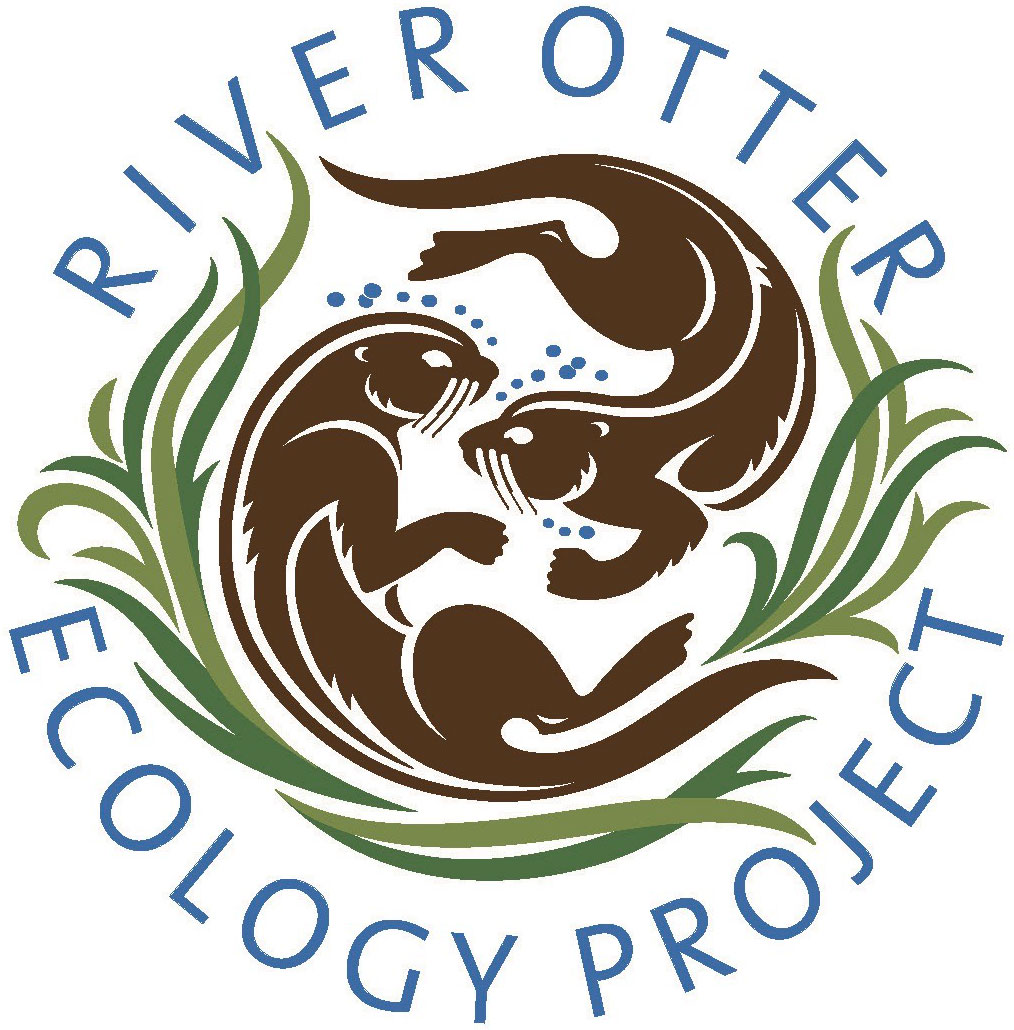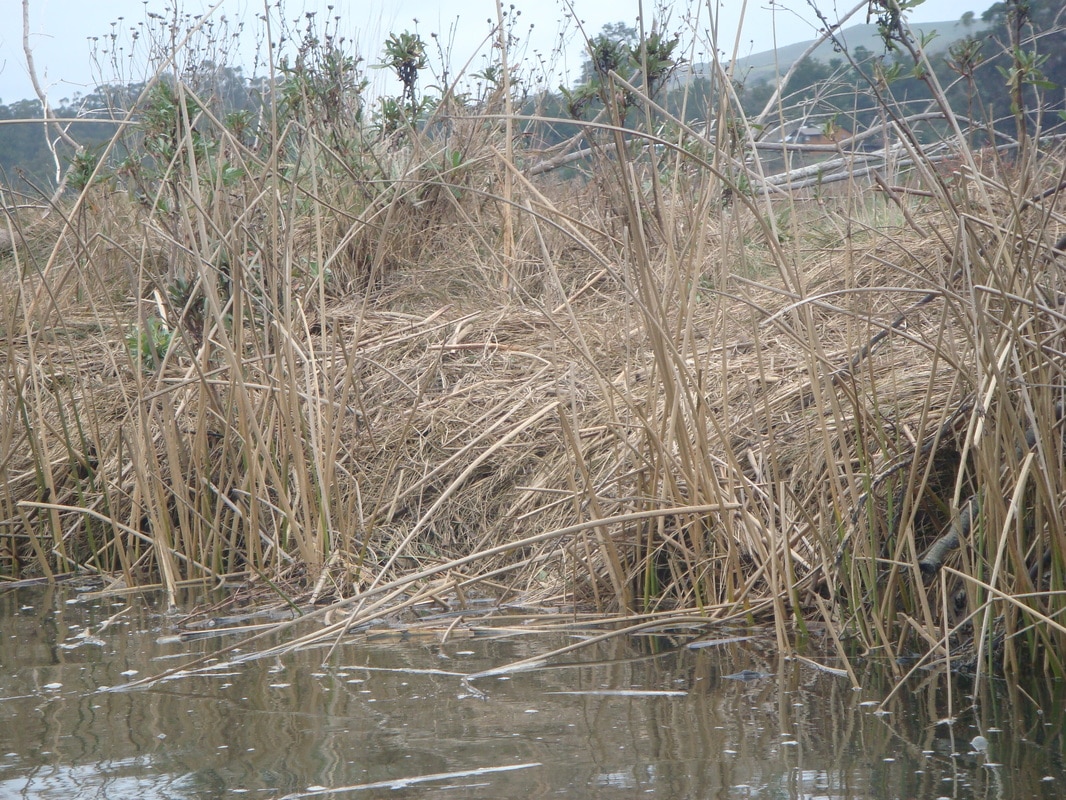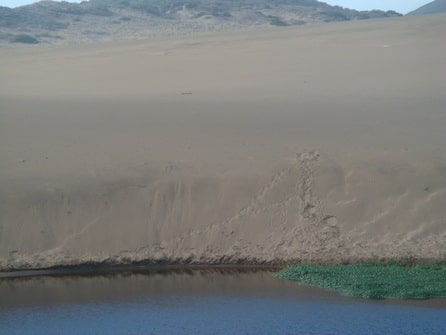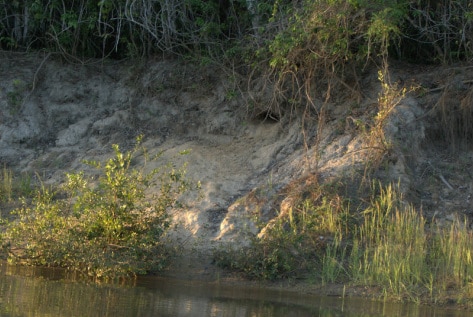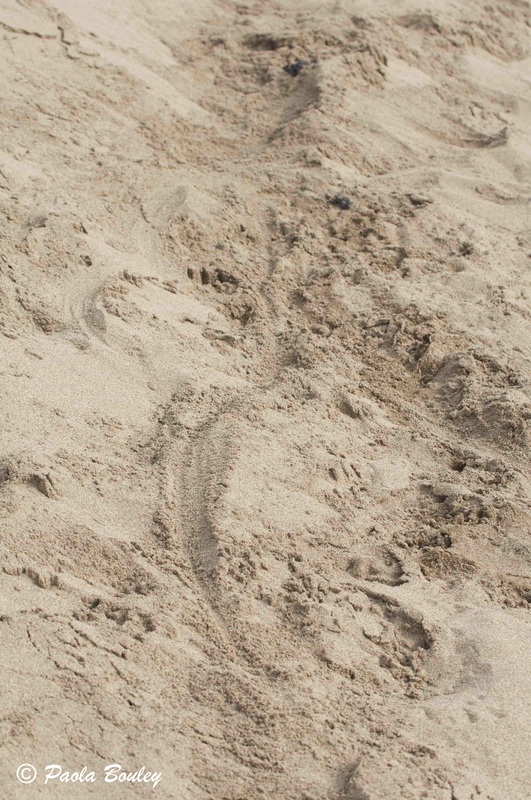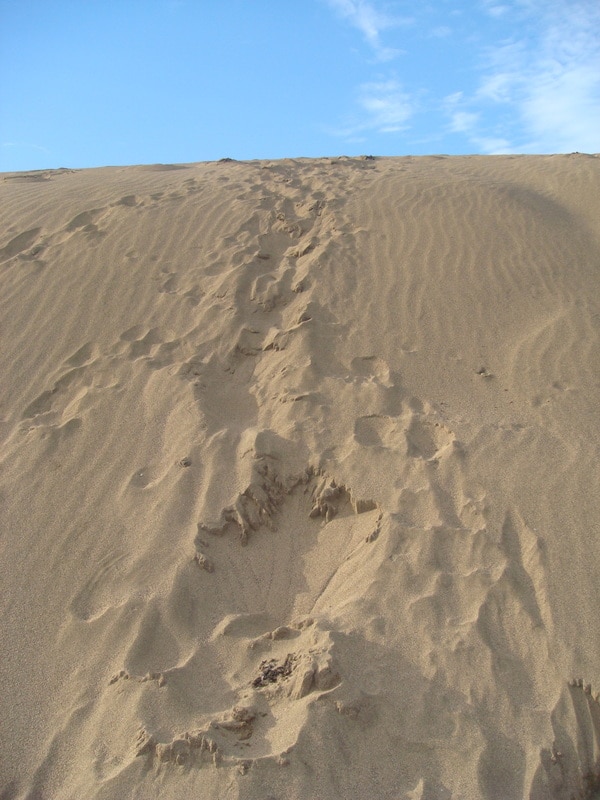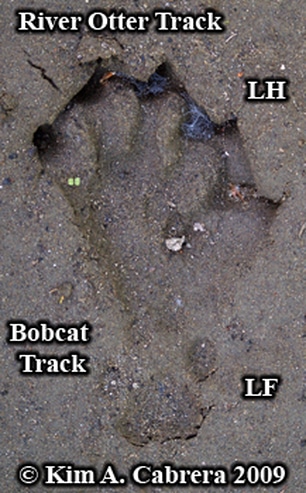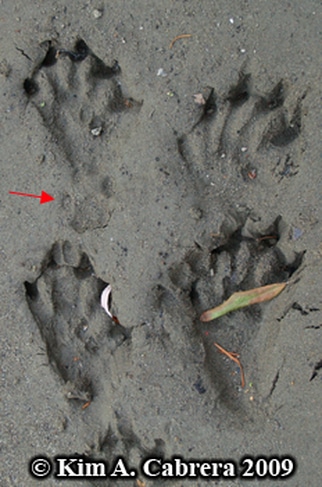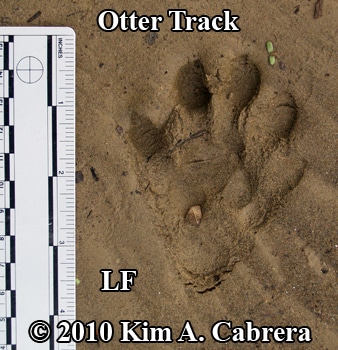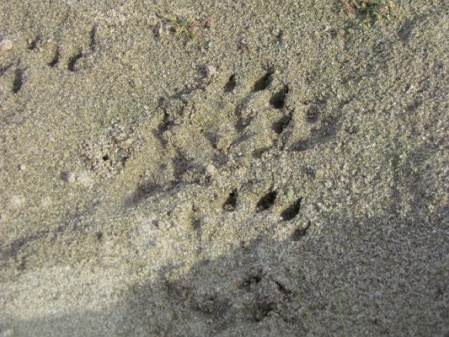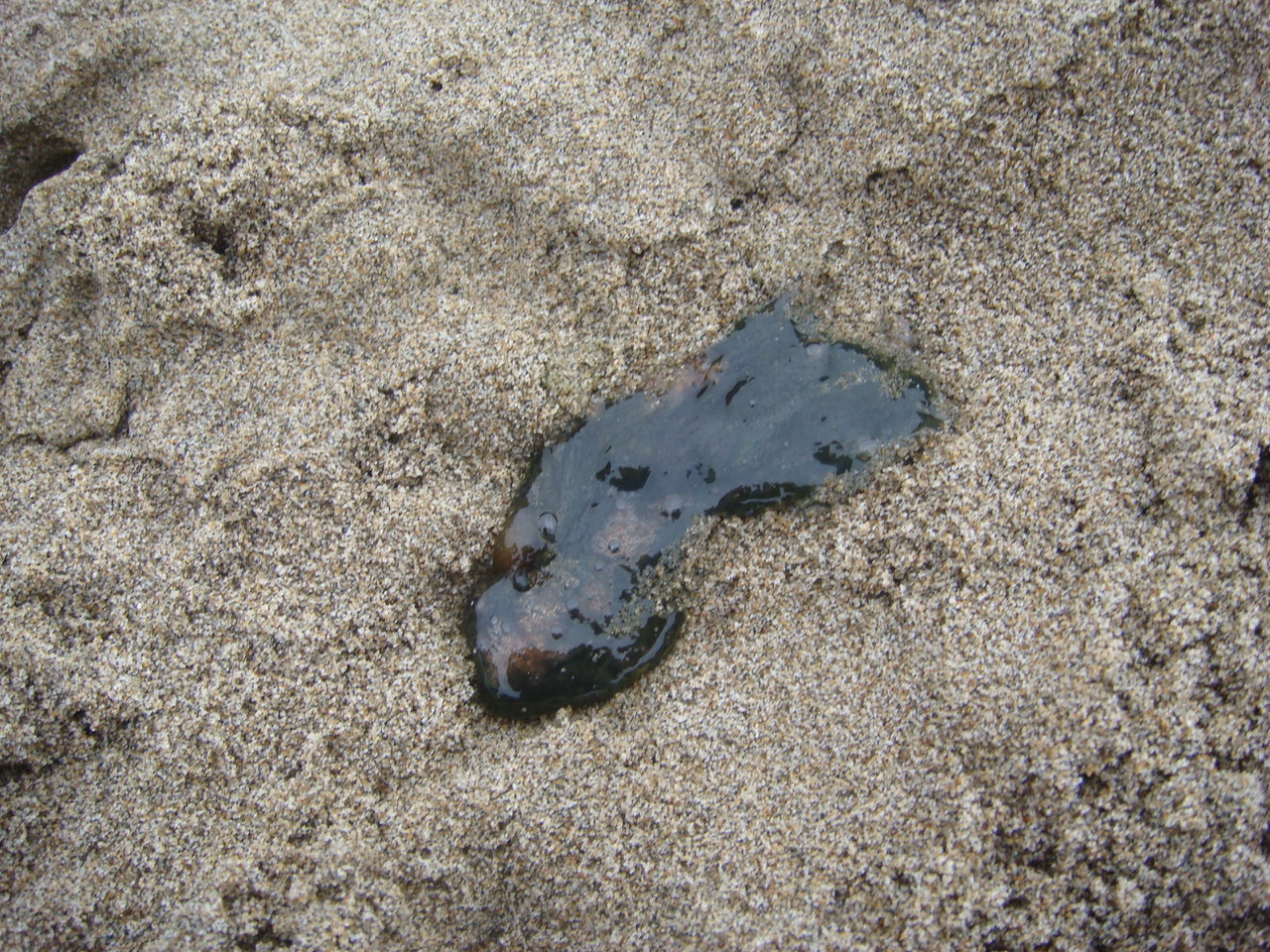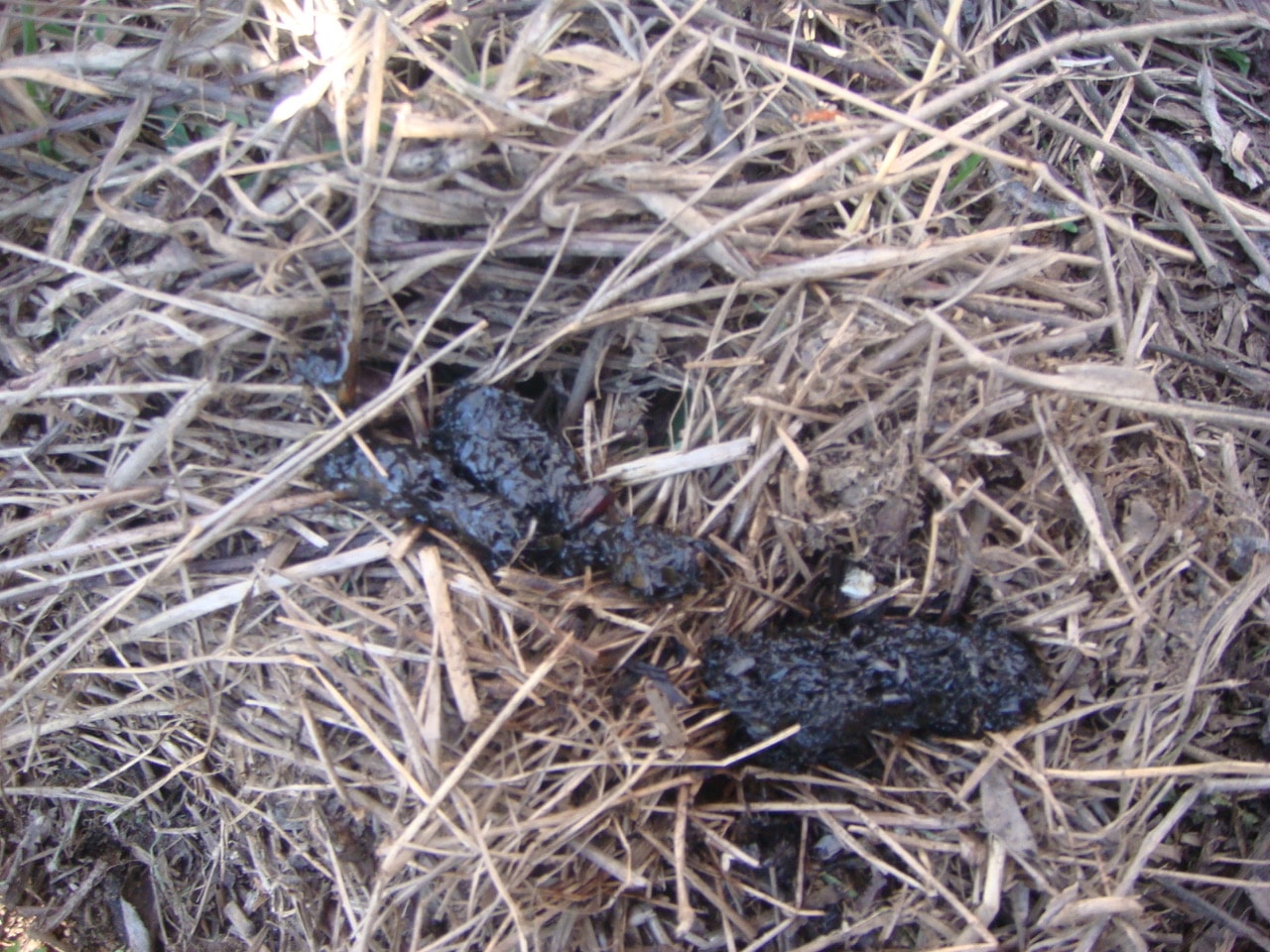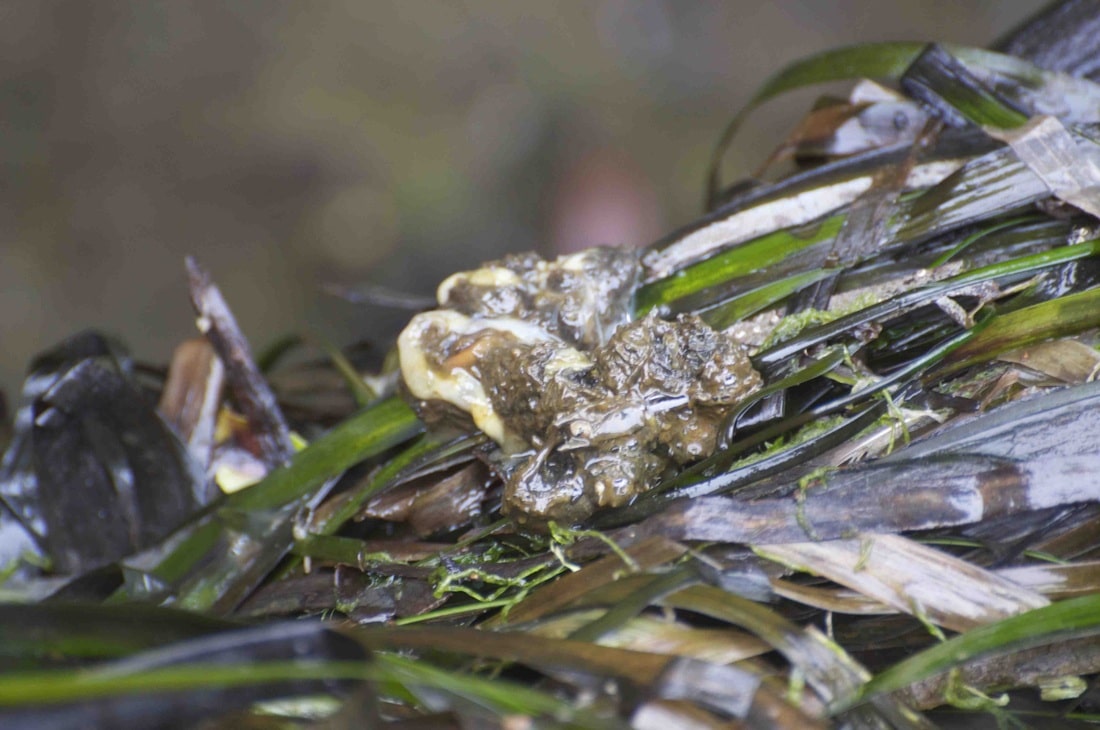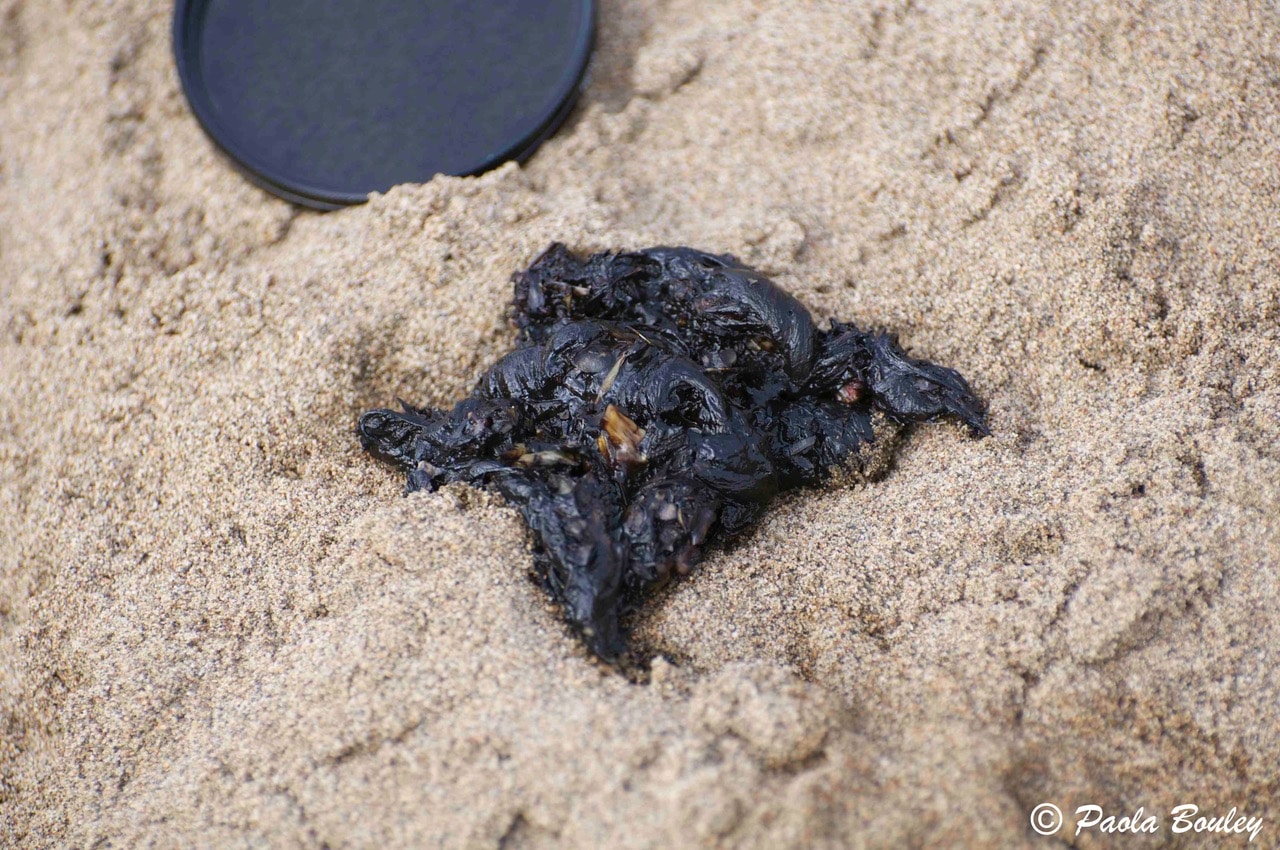The Otter Spotter’s Field Guide
Click on any photograph to see an enlarged version.
OTTER SIGNS AND TRAILS
Toilet or latrine sites: These are often found on high points along the banks of streams, bays or along crossover trails between water bodies. The vegetation is usually flattened out, and the area may contain numerous piles of otter scat, often comprised of fish scales or crayfish parts.
Slides: The most obvious and best-known evidence of otters — mud or ice/snow. Riverbank slides 8″ (200 mm) wide, much wider with heavy use. Snowslides 12″ (300 mm) wide or wider, up to 25′ (7.5 m) long; often on flat ground, sometimes pitted with blurred prints where otter has given itself a push for momentum.
Wallows or rolling places: These occur along water edges, crossover places and marshes, and are recognized by an area where the grasses or dirt have been flattened and raked or scratched into several small, twisted piles. Flattened areas may be up to 2 meters (6.5 ft) wide.
Otters like to travel from one small water body to the next looking for food. Any small ditch, creek, or stream that connects to another body of water is likely to be an otter travel-way. This is especially true of small drainages that lead to or from a marsh, lake, or pond where the otters like to hunt. Dogs often find otter scent-marking places and roll in them.
LEFT: Otter slide with tracks
Photo: Megan Isadore
RIGHT: Otter holt (den) with slide
Photo: savingotters.wildlifedirect.org
OTTER TRACKS
An otter track is 3 1/4″ (80 mm) wide or more, about 4” long, and often show only heel pad and claws. Toes fan out widely, but webbing rarely prints, except in mud. Running stride is 12–24″ (300–600 mm).
Look for tracks on muddy river banks around ponds, streams, lakes, rivers, marshes and beaches near fresh water.
The photo at left shows where an otter stepped on top of a bobcat track. The otter’s large left hind foot landed on a left front bobcat track. The webbing on the otter track left a clear imprint here.
The bobcat track in the photo at left can be seen in the photo at right, along with four otter tracks.
Photos: © Kim A. Cabrera 2009
LEFT: This is the left front track of a river otter. The long heel left an imprint here, which does not always happen. Notice also the lack of claw marks. Sometimes, the claws do not show in tracks. There are four pads on the “heel” which are visible in this photo. The inner toe is the smallest and is set further back in the track.
Photo: © Kim A. Cabrera 2010
RIGHT: Otter Tracks in Sand, Point Reyes National Seashore
Photo: Sharon Barnett
OTTER SCAT
Irregular, sometimes short, rounded segments, sometimes flattened masses, containing fish bones, scales, or crayfish parts; when fresh, often greenish and slimy. Scat most often found on banks of stream or pond, on logs, or on rocks in water.
